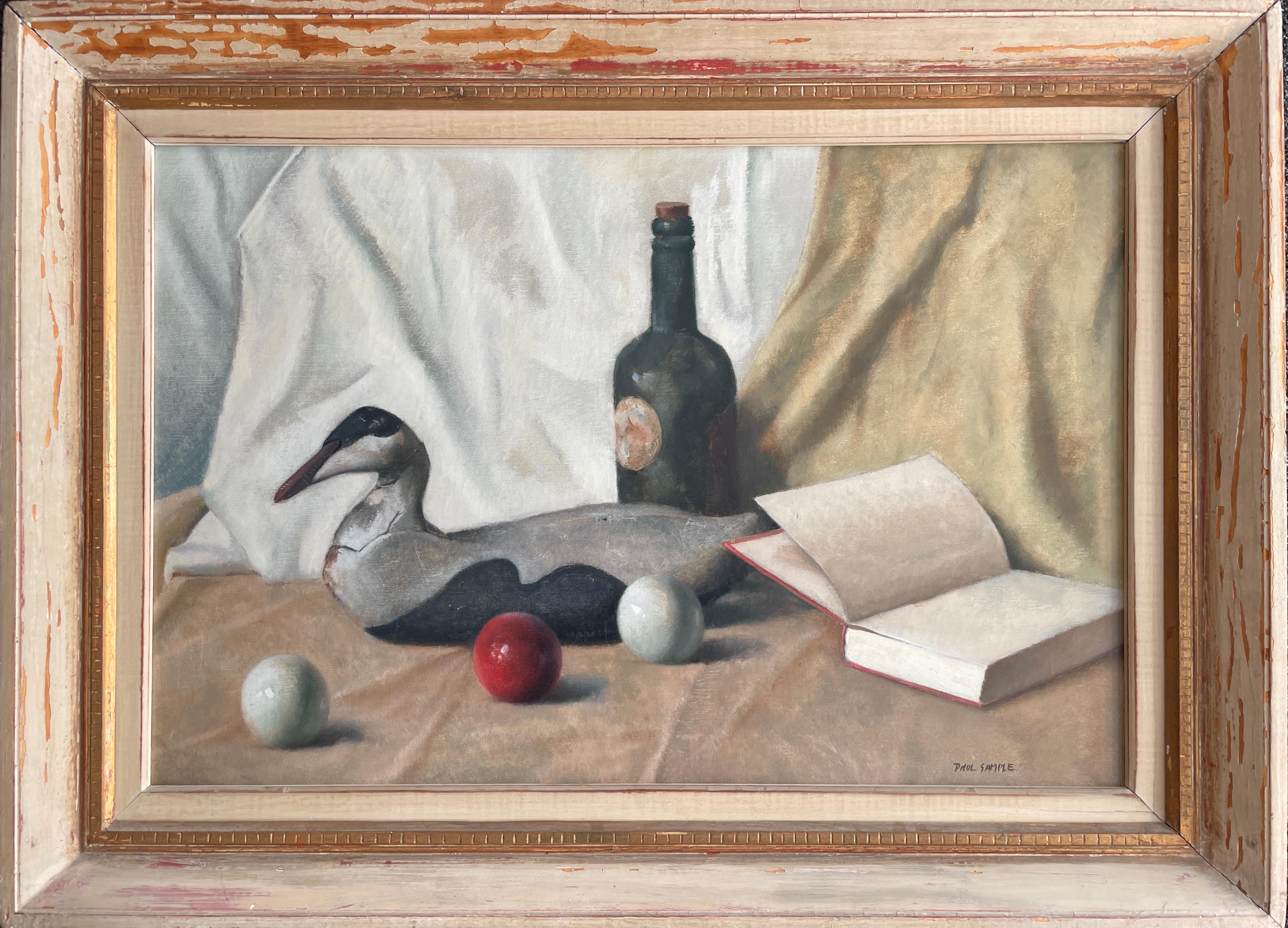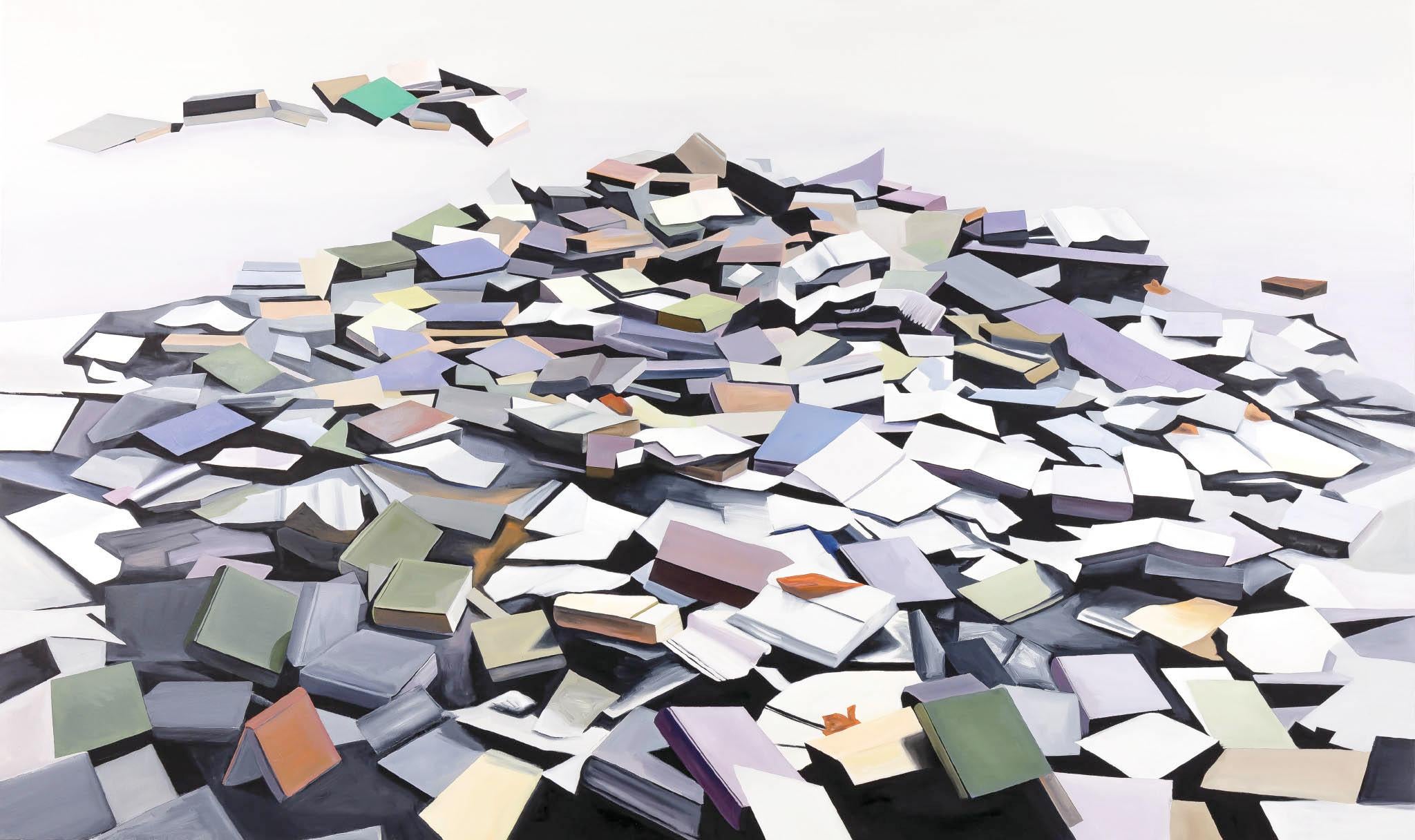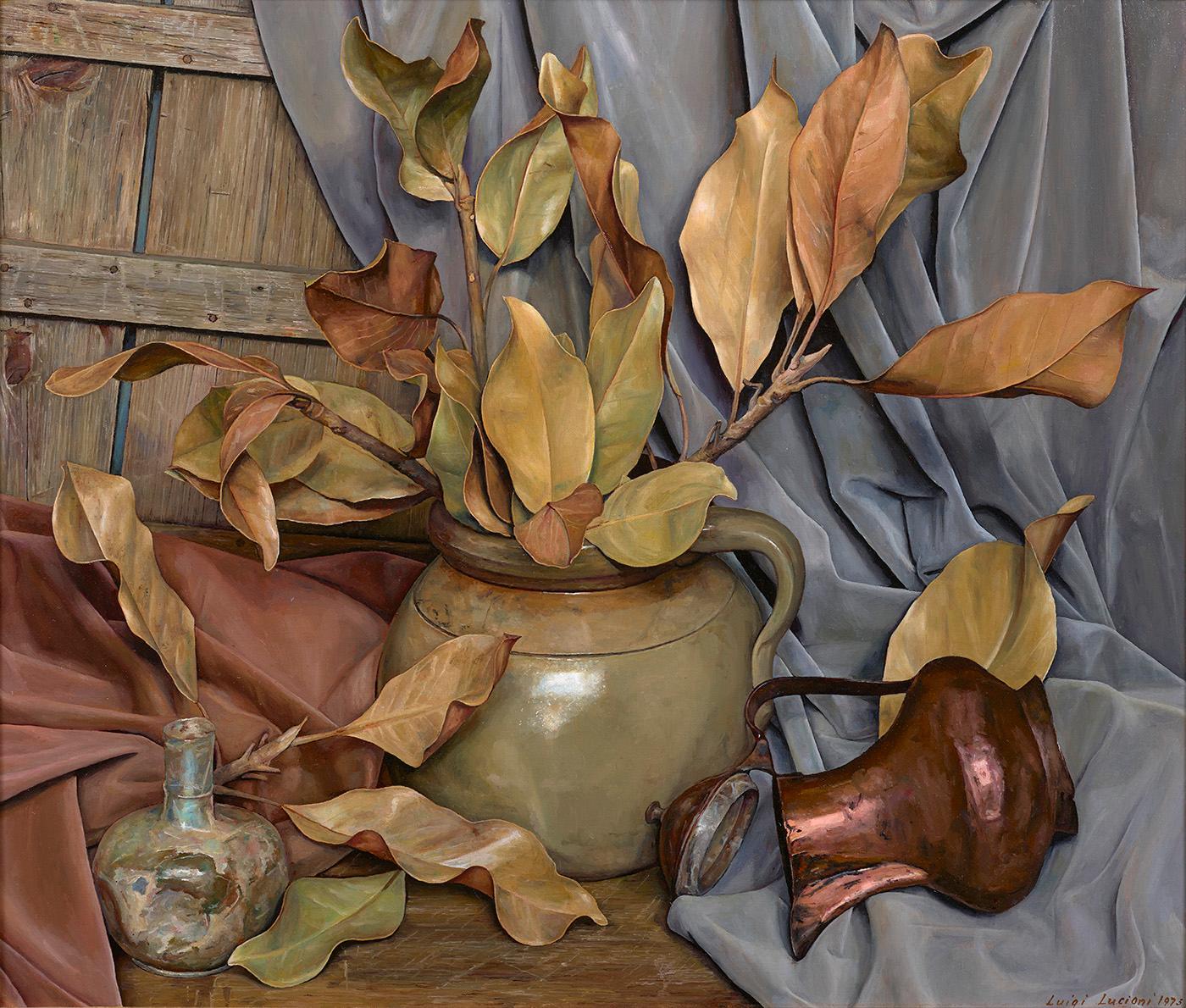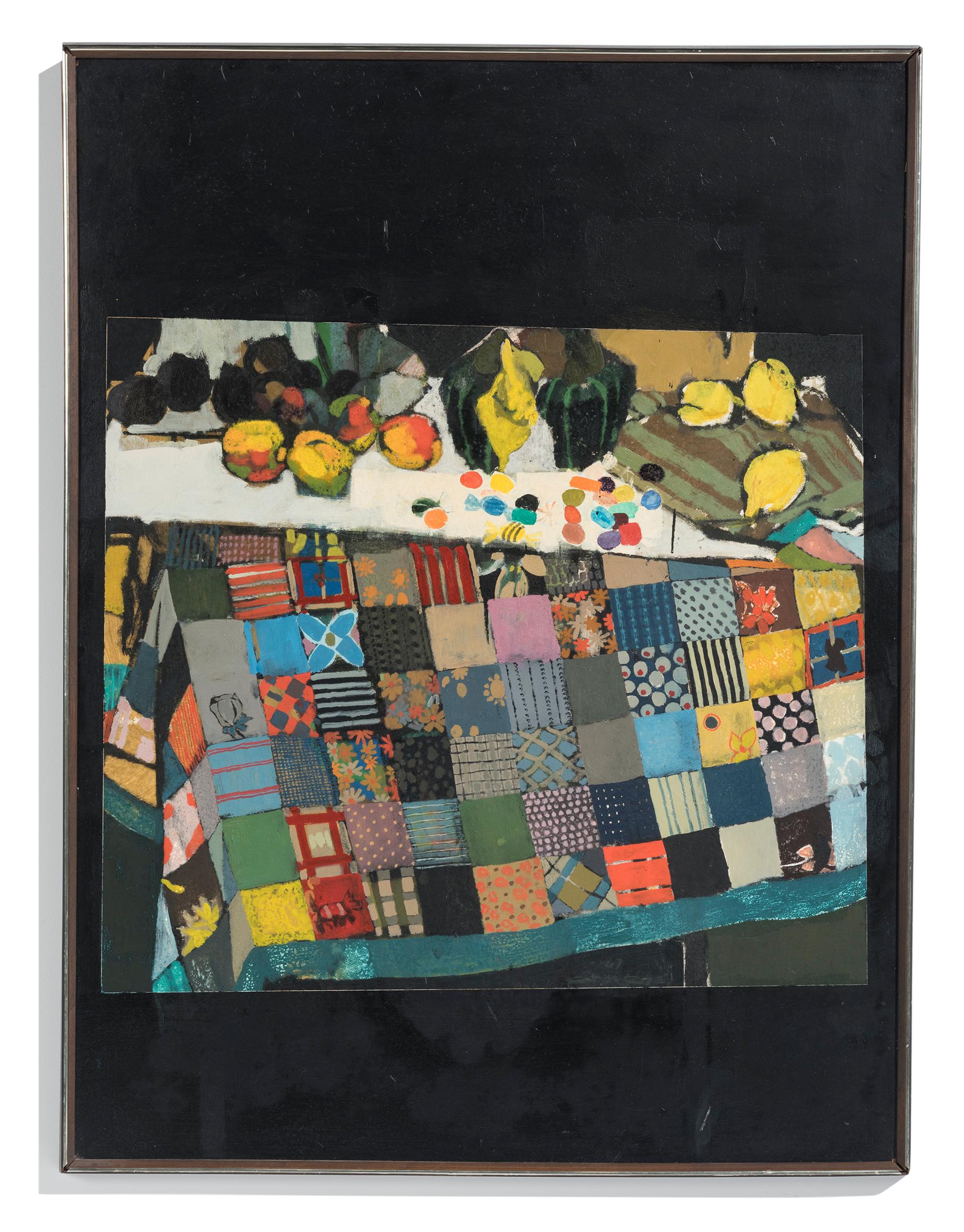Items Similar to Flower Still Life
Want more images or videos?
Request additional images or videos from the seller
1 of 5
Adrian DornbushFlower Still Life1931
1931
About the Item
(Note: This work is part of our exhibition Connected by Creativity: WPA Era Works from the Collection of Leata and Edward Beatty Rowan)
Oil on canvas, 24 ½ x 19 ½ inches unframed, 32 x 27 inches framed, signed and inscribed “Adrian Dornbush/ Flower Still Life” verso, a remnant of exhibition label verso, stamped “1454” verso, original frame
Exhibited:
i) Midwestern Artist’s Exhibition Representative Work from Missouri, Kansas, Oklahoma, Nebraska & Colorado, Kansas City Art Institute, February 1 to March 2, 1931, no. 34 (see catalog with a listing of work with this title); and ii) Special Display and Sale of Late Oil Paintings Produced by Cedar Rapids Own Artists from the Little Gallery, at Newman’s Department Store, Cedar Rapids, Iowa, March 1932 (see [Advertisement], The Gazette (Cedar Rapids, Iowa), March 15, 1932 – listing a work with this title, together with paintings by fourteen other artists, including Grant Wood, Marvin Cone and David McCosh)
About the Artist
Adrian J. Dornbush was born in Groningen, Holland in 1900. He is known for modernist and regionalist landscapes, portraiture, and still-life paintings. Dornbush earned a B.A in 1918 at the University of Wisconsin. He also studied in Europe for two years and at the University of Kansas. Dornbush organized the Flint Institute of Art and was named its director. He also worked as an administrator and instructor at various midwestern institutions, including Dubuque Iowa public schools, the Dubuque Art Association, and the University of Kansas. He established the art instruction program at the Little Gallery in Cedar Rapids and was a co-founder and the director of the Stone City Art Colony. In 1934, Dornbush led the Key West, Florida art project of the Federal Emergency Relief Administration (FERA). Dornbush maintained a close relationship with Edward Rowan and served with him in several New Deal art projects, including as the senior administrator for the Tennessee Valley area and the Special Skills branch of the WPA. Dornbush’s work was exhibited widely across the country as part of traveling exhibitions from public works projects. Dornbush is listed in Who Was Who in American Art and other standard references.
- Creator:Adrian Dornbush (1900 - 1970, American)
- Creation Year:1931
- Dimensions:Height: 24.5 in (62.23 cm)Width: 19.5 in (49.53 cm)
- More Editions & Sizes:32 x 37 inches framedPrice: $5,250
- Medium:
- Movement & Style:
- Period:
- Condition:
- Gallery Location:Los Angeles, CA
- Reference Number:1stDibs: LU1859212569582
About the Seller
No Reviews Yet
Vetted Seller
These experienced sellers undergo a comprehensive evaluation by our team of in-house experts.
1stDibs seller since 2022
6 sales on 1stDibs
Typical response time: 6 hours
- ShippingRetrieving quote...Ships From: Los Angeles, CA
- Return PolicyA return for this item may be initiated within 3 days of delivery.
More From This SellerView All
- The ShelfLocated in Los Angeles, CAOil on canvas, 18 x 20 inches, Signed lower right This painting is part of our exhibition Charles Goeller: A Wistful Loneliness. Exhibited: 1) (likel...Category
1930s American Modern Still-life Paintings
MaterialsOil
- Untitled (Horns and Bow)Located in Los Angeles, CAThis painting is part of our exhibition America Coast to Coast: Artists of the 1940s. Untitled (Horns and Bow), 1941, oil on board, signed and dated lower right, 15 x 20 1/x inches...Category
1940s American Modern Paintings
MaterialsOil, Board
- Six O'ClockLocated in Los Angeles, CASix O-Clock, c. 1942, oil on canvas, 30 x 20 inches, signed and titled several times verso of frame and stretcher (perhaps by another hand), marked “Rehn” several times on frame (for the Frank K. M. Rehn Galleries in New York City, who represented Craig at the time); Exhibited: 1) 18th Biennial Exhibition of Contemporary American Oil Paintings from March 21 to May 2, 1943 at The Corcoran Gallery of Art in Washington, D.C. #87, original price $450 (per catalog) (exhibition label verso), 2) Craig’s one-man show at the Frank K. M. Rehn Galleries, New York City, from October 26 to November 14, 1942, #10 (original price listed as $350); and 3) Exhibition of thirty paintings sponsored by the Harrisburg Art Association at the State Museum of Pennsylvania in Harrisburg in March, 1944 (concerning this exhibit, Penelope Redd of The Evening News (Harrisburg, Pennsylvania) wrote: “Other paintings that have overtones of superrealism inherent in the subjects include Tom Craig’s California nocturne, ‘Six O’Clock,’ two figures moving through the twilight . . . .” March 6, 1944, p. 13); another label verso from The Museum of Art of Toledo (Ohio): original frame: Provenance includes George Stern Gallery, Los Angeles, CA About the Painting Long before Chris Burden’s iconic installation outside of the Los Angeles County Museum of Art, Urban Light, another artist, Tom Craig, made Southern California streetlights the subject of one of his early 1940s paintings. Consisting of dozens of recycled streetlights from the 1920s and 1930s forming a classical colonnade at the museum’s entrance, Burden’s Urban Light has become a symbol of Los Angeles. For Burden, the streetlights represent what constitutes an advanced society, something “safe after dark and beautiful to behold.” It seems that Craig is playing on the same theme in Six O-Clock. Although we see two hunched figures trudging along the sidewalk at the end of a long day, the real stars of this painting are the streetlights which brighten the twilight and silhouette another iconic symbol of Los Angeles, the palm trees in the distance. Mountains in the background and the distant view of a suburban neighborhood join the streetlights and palm trees as classic subject matter for a California Scene painting, but Craig gives us a twist by depicting the scene not as a sun-drenched natural expanse. Rather, Craig uses thin layers of oil paint, mimicking the watercolor technique for which he is most famous, to show us the twinkling beauty of manmade light and the safety it affords. Although Southern California is a land of natural wonders, the interventions of humanity are already everywhere in Los Angeles and as one critic noted, the resulting painting has an air of “superrealism.” About the Artist Thomas Theodore Craig was a well-known fixture in the Southern California art scene. He was born in Upland California. Craig graduated with a degree in botany from Pomona College and studied painting at Pamona and the Chouinard Art School with Stanton MacDonald-Wright and Barse Miller among others. He became close friends with fellow artist Milford Zornes...Category
1940s American Modern Landscape Paintings
MaterialsCanvas, Oil
- Fallen Comrades/InterludeLocated in Los Angeles, CAThis work is part of our exhibition - America Coast to Coast: Artists of the 1940s Fallen Comrades/Interlude, 1949, oil on masonite, signed lower left, 35 x 56 inches; Gallery Z la...Category
1940s American Modern Paintings
MaterialsMasonite, Oil
- Nude with DrapeBy Fletcher MartinLocated in Los Angeles, CANude with Drape, c. 1937, oil on board, 24 x 17 (oval), signed lower right, provenance: Frances Lee Kent Falcone Family Trust About the Painting Fletcher Martin’s Nude with Drape ...Category
1930s American Modern Figurative Paintings
MaterialsOil
- Energy Manifestation #4Located in Los Angeles, CAEnergy Manifestation #4, 1933, oil on canvas, 24 x 30 inches, signed and dated lower left. Likely exhibited at Nicolaides’ solo show at the Wadsworth Atheneum (Morgan Memorial Building), Hartford, Connecticut, in April, 1933 (see Memorial Opens Varied Display of Nicolaides Work, Originality Distinguishes Creations of New York City Artist, Hartford Courant, April 5, 1933) About the Painting This rare work comes from Nicolaides’ energy series, which draws on a unique combination of machine- age aesthetics, Italian-influenced Futurism and French-inspired Surrealism. But, this is a uniquely American work produced in the melting pot of the 1930s metropolis, New York City. Nicolaides uses the ray lines of the American precisionists to frame a pulsating apparatus that unites man and machine as one. The cogs and gears of the fantasy machine seamlessly blend with the hand of its operator. We are left to wonder whether the two are working together in harmony or whether the worker has been absorbed into the machine, like a Depression era robot. In reviewing the 1933 Wadsworth Atheneum show, where works from Nicolaides’ energy series were exhibited, a critic described these paintings as “combining . . . highly imaginative form aspects of machinery and flashes of color which seem to represent light and heat.” The same critic praised the artist, “Mr. Nicolaides here achieves powerful effects with line, mass and color. These pictures are striking for the solidity of the objects portrayed, for their composition and for their delicate orchestration of tones.” Commenting on the same exhibition, Frederick Hynd, the director of the Hartford Art School, noted that “Mr. Nicolaides’ work was noteworthy for its extremely personal sense of color and for its imagination” and that the artist achieved decorative effects “based on emotional ideas.” About the Artist Kimon Nicolaides...Category
1930s American Modern Abstract Paintings
MaterialsOil
You May Also Like
- The Wood Decoy oil painting by Paul SampleBy Paul SampleLocated in Hudson, NYSigned "Paul Sample" lower right; titled and signed verso: "The Wood Decoy" & "Paul Sample" in pencil in the artist's hand. Paul Sample was an acclaimed Ne...Category
Mid-20th Century American Modern Still-life Paintings
MaterialsCanvas, Oil
- Abandoned BooksLocated in San Luis Obispo, CAeffrey Long, the elder son of a commercial graphic artist at Time & Life, was born in New York City in 1948. In 1970 Long received a BFA in Illustration and Art Education from Rhode Island School of Design and had decided to be a painter. His paintings from this period were photo realistic portraits and figures set in landscapes. On graduation, he married and began teaching art in a Rhode Island public school system. From 1971 through 1973 he was a resident artist at the Rockefeller-funded Pulpit Rock Community in Woodstock, Connecticut. Works from this intensive period were representational, highly dynamic, and borrowed from the vocabulary of cartoons. In early 1974 Long moved to the San Francisco Bay Area, where he obtained a full scholarship at California College of Arts & Crafts (now California College of Arts). There he received an MFA in painting in 1976. He established various studios in Oakland and Emeryville, while also working as a Curatorial Assistant at The Oakland Museum. The museum brought him in touch with such California artists as Richard Diebenkorn, Elmer Bischoff, Manuel Neri, Joan Brown, Jay de Feo...Category
2010s American Modern Interior Paintings
MaterialsOil
- Harmony in Minor KeyBy Luigi LucioniLocated in New York, NYSigned and dated lower right: Luigi Lucioni 1973Category
Late 20th Century American Modern Still-life Paintings
MaterialsCanvas, Oil
- Henry Ernst Schnakenberg, (Still Life with Scull)By Henry Ernst SchnakenbergLocated in New York, NYHenry Schnakenberg is mostly known for New York City scenes. This is clearly a departure. It is signed at the lower left and dated '4-53' on the r...Category
1950s American Modern Still-life Paintings
MaterialsOil
- Dance Wands, Modernist Southwestern Still Life and Cultural CommentaryLocated in Doylestown, PA"Dance Wands" is a 36 x 24 inches, oil on canvas painting by American modernist and surrealist, female artist Peter Miller. The work is painted in a vibrant color palette, signed and...Category
1950s American Modern Still-life Paintings
MaterialsCanvas, Oil
- Charles McGee Oil Painting "Squares and Things" African-American 1967By Charles McGeeLocated in Detroit, MI"Squares and Things" painted by the eminent artist, Charles McGee, literally breaths his African American heritage and his extraordinary vibrant use of colors. Provenance is The Arwin Galleries on Grand River in Detroit, Michigan - label on verso. This early painting of McGee's shows his mastery in creating a painting in the style of the French Impressionist Edouard Manet, "Still Life with Melon and Peaches" located in the National Gallery of Art, Washington, DC, and in the style of Fauvist/Expressionist painter Henry Matisse, "Still Life with Blue Tablecloth", located in the Hermitage Museum, Saint Petersburg, Russia. McGee makes the well-known genre of still life his own creating an exciting marvelous work incorporating the homely quilt - the powerful symbol of the African American road to safety from slavery - as his main focus. Quilts symbolize warmth, comfort, and as shown by the collection of quilts gathered by the artists in Gee's Bend the designs on the quilts hung outdoors at locations along the Underground Railroad showed fugitives the road north and to safety. "Squares and Things" was first shown at The Arwin Galleries, Inc., Detroit, Michigan, one of the stops along the Underground Railroad. This piece is signed by the artist, Charles McGee, and is an extraordinary example of his early work before he moved into Abstract Expressionism and his many sculptural works now located throughout Michigan. Several of these works are: "Noah's Ark: Genesis, 1984," on display at the Detroit Institute of Arts, his brilliant 2005 "Progression" a 45-foot wide aluminum sculpture at Beaumont Hospital, Royal Oak, Michigan, and his stunning 2016 "United We Stand" sculpture at the Charles H. Wright Museum of African American History . His genius can be seen in sculpture installments throughout the city of Detroit. . He was born into a family of sharecroppers. While helping his grandfather tend the land, "he observed firsthand the order and harmony that exists within nature." He had no formal schooling until moving to Detroit at age 10, where he found that "everything was on the move and it hasn’t slowed down yet." in 2017 he observed, "I learned something not being in school — because life is school . . .I learn something every time I move. Every time I go around a corner, something new is revealed to me.” McGee took advantage of the GI Bill to attend classes at the Society of Arts and Crafts, now the College for Creative Studies, Detroit, MI. Other College for Creative Studies (formerly Center for Creative Studies) faculty and graduates include Richard Jerzy, Harry Bertoia, Doug Chaing (currently director of Lucas Film), Stephen Dinehart (game maker, writer, designer connected with The David Lynch Foundation), Tyree Guyton (international artist), Herb Babcock, Jerome Feretti, Kevin Siembieda (writer, designer and publisher of role-playing games), Renee Radell, and Philip Pearlstein. After retiring from the Corps of Engineers, McGee spent 1968 studying art in Barcelona. Despite not knowing the language at the outset, he immersed himself in the culture and opened himself to a whole new range of experience that would play out in his artwork. "If you free yourself, you have this kind of opportunity to have those experiences, horizons, and new vistas." (per interview with Nick Sousanis author of a book on Charles McGee.) He returned to Detroit and curated "Seven Black Artists" at the Detroit Artists Market in 1969, which along with McGee himself, included Lester Johnson, Henri Umbaji King, Robert Murray, James Lee, Allie McGhee...Category
Late 20th Century American Modern Still-life Paintings
MaterialsOil, Masonite




